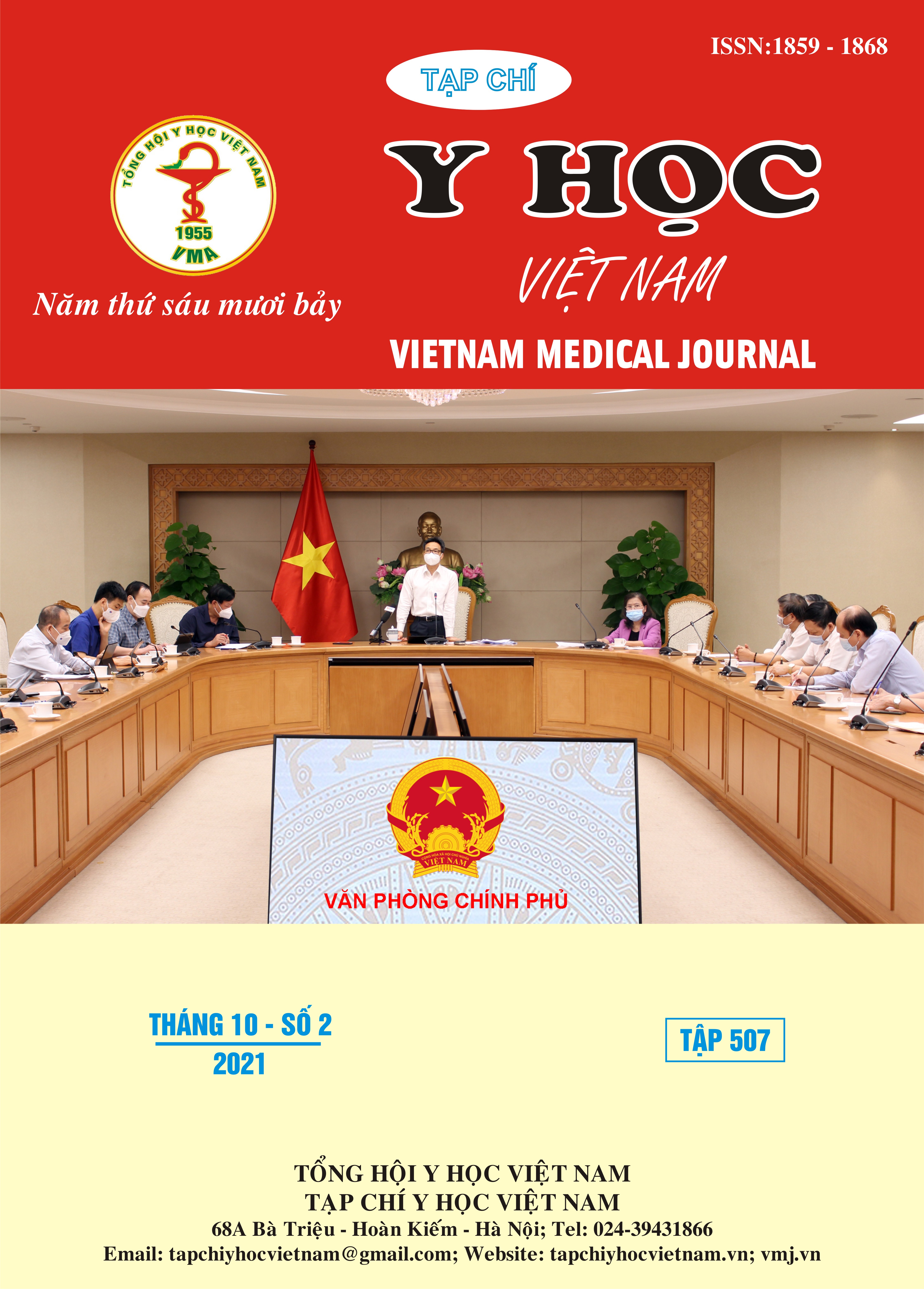EVALUATION OF RELATION BETWEEN HELICOBACTER PYLORI GENOTYPES AND CLARITHROMYCIN RESISTANCE IN PATIENTS HAD GASTRODUODENAL ULCER AND GASTRITIS
Main Article Content
Abstract
Background: Clarithromycin resistance is increasing worldwide and is the most common cause of Helicobacter pylori treatment failure. Objectives: This study aims to determine the rate of clarithromycin resistance of Helicobacter pylori in patients with inflammation, gastric ulcer - duodenal ulcer and the relationship between genotype and clarithromycin resistance of Helicobacter pylori. Materials and methods: This cross-sectional study was conducted on peptic ulcer patients in Tien Giang province from May 2020 to May 2021. Participants were interviewed, clinically examined, and collected samples of gastrointestinal mucosa. Patients were identified as Helicobacter pylori infection by gram stain, possitive urease test or positive culture microbiology test in Helicobacter pylori. Clarithromycin resistance in Helicobacter pylori was determined by E-test method and determined genotype by Realtime-PCR technique. Results: The rate of clarithromycin resistance of Helicobacter pylori in patients participating in the study was 77.3%. The group of patients infected with the Helicobacter pylori strain carrying the cagA(+) genotype had a higher rate of antibiotic resistance than the group of patients infected with the Helicobacter pylori strain carrying the cagA(-) genotype, with an OR (95%CI): 11.25 (1.11-114.37), p=0.024. Conclusions: Helicobacter pylori cagA(+)-positive patients should receive special attention because of their increased resistance to clarithromycin.
Article Details
Keywords
Helicobacter pylori, antibiotic resistance, CagA, VacA
References
2. Phạm Hồng Khánh (2021), Tần suất và các yếu tố độc lực của Helicobacter pylori ở bệnh nhân viêm dạ dày mạn, Tạp chí Y học Việt Nam, 505, trang 65-68.
3. Camelia Quek, Son T. Pham, Kieu T. Tran et al. (2016), Antimicrobial susceptibility and clarithromycin resistance patterns of Helicobacter pylori clinical, F1000Research, 5, page: 671.
4. Judit Alarcón-Millán (2016), Clarithromycin resistance and prevalence of Helicobacter pylori virulent genotypes in patients from Southern México with chronic gastritis, Infection, Genetics and Evolution, 44, pp: 190-198.
5. María R. Baroni (2018), Usefulness of rapid urease test samples for molecular analysis of clarithromycin resistance in Helicobacter pyloriUtilidad de las muestras de test rápido de ureasa para el análisis molecular de resistencia a claritromicina en Helicobacter pylori, Revista Argentina de Microbiología, 50(4), pp: 359-364.
6. Ngoc Quy Hue Dang, Thi Minh Thi Ha, Si-Tuan Nguyen et al. (2020), High rates of clarithromycin and levofloxacin resistance of Helicobacter pylori in patients with chronic gastritis in the south east area of Vietnam, Journal of Global Antimicrobial Resistance, 22, pp: 620-624.
7. Ratha Korn Vilaichone (2018), Prevalence and Pattern of Antibiotic Resistant Strains of Helicobacter Pylori Infection in ASEAN, Asian Pac J Cancer Prev, 19(5), pp: 1411-1413.
8. Van Huy Tran (2018), Characterisation of point mutations in domain V of the 23S rRNA gene of clinical Helicobacter pylori strains and clarithromycin-resistant phenotype in central Vietnam, Journal of Global Antimicrobial Resistance, 16, pp: 87-91.


